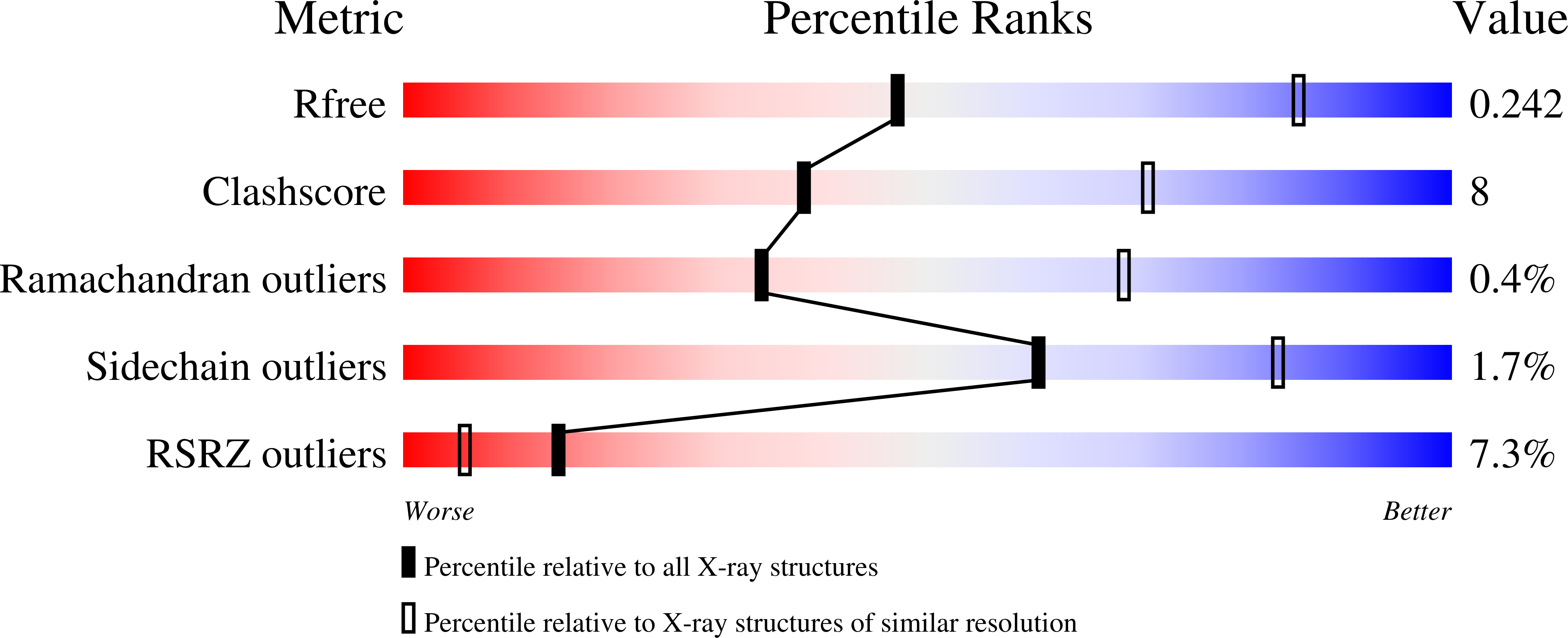Distinct regions that control ion selectivity and calcium-dependent activation in the bestrophin ion channel.
Vaisey, G., Miller, A.N., Long, S.B.(2016) Proc Natl Acad Sci U S A 113: E7399-E7408
- PubMed: 27821745
- DOI: https://doi.org/10.1073/pnas.1614688113
- Primary Citation of Related Structures:
5T5N - PubMed Abstract:
Cytoplasmic calcium (Ca 2+ ) activates the bestrophin anion channel, allowing chloride ions to flow down their electrochemical gradient. Mutations in bestrophin 1 (BEST1) cause macular degenerative disorders. Previously, we determined an X-ray structure of chicken BEST1 that revealed the architecture of the channel. Here, we present electrophysiological studies of purified wild-type and mutant BEST1 channels and an X-ray structure of a Ca 2+ -independent mutant. From these experiments, we identify regions of BEST1 responsible for Ca 2+ activation and ion selectivity. A "Ca 2+ clasp" within the channel's intracellular region acts as a sensor of cytoplasmic Ca 2+ . Alanine substitutions within a hydrophobic "neck" of the pore, which widen it, cause the channel to be constitutively active, irrespective of Ca 2+ . We conclude that the primary function of the neck is as a "gate" that controls chloride permeation in a Ca 2+ -dependent manner. In contrast to what others have proposed, we find that the neck is not a major contributor to the channel's ion selectivity. We find that mutation of a cytosolic "aperture" of the pore does not perturb the Ca 2+ dependence of the channel or its preference for anions over cations, but its mutation dramatically alters relative permeabilities among anions. The data suggest that the aperture functions as a size-selective filter that permits the passage of small entities such as partially dehydrated chloride ions while excluding larger molecules such as amino acids. Thus, unlike ion channels that have a single "selectivity filter," in bestrophin, distinct regions of the pore govern anion-vs.-cation selectivity and the relative permeabilities among anions.
Organizational Affiliation:
Structural Biology Program, Memorial Sloan Kettering Cancer Center, New York, NY 10065.






















